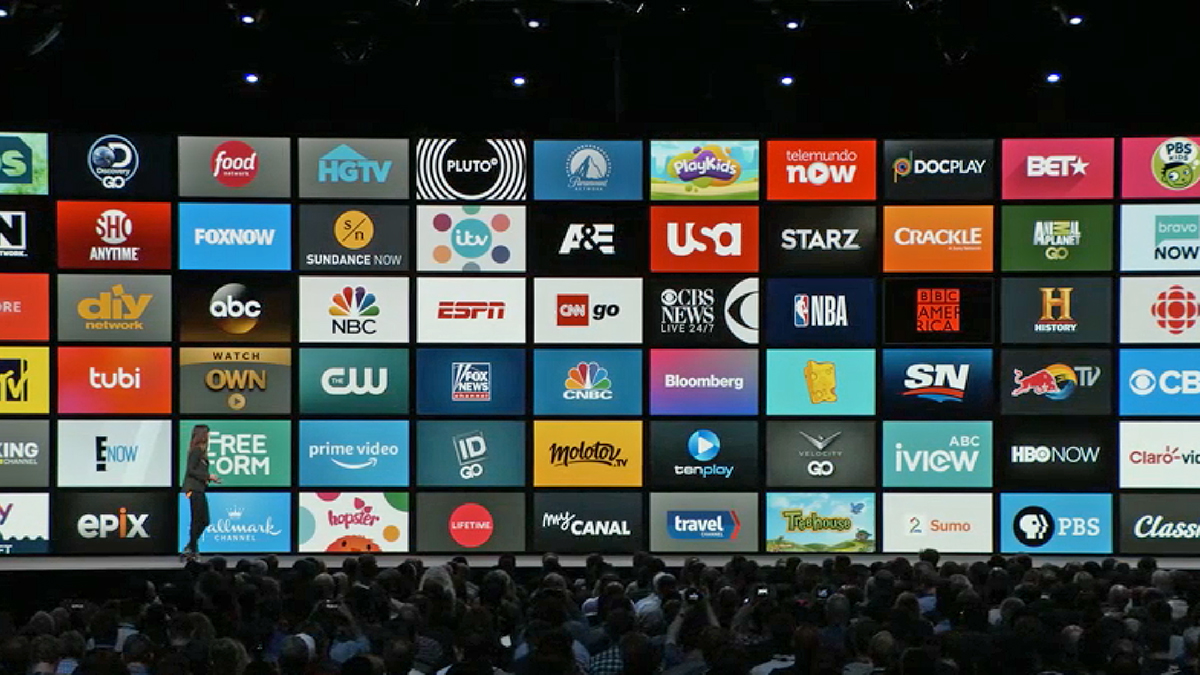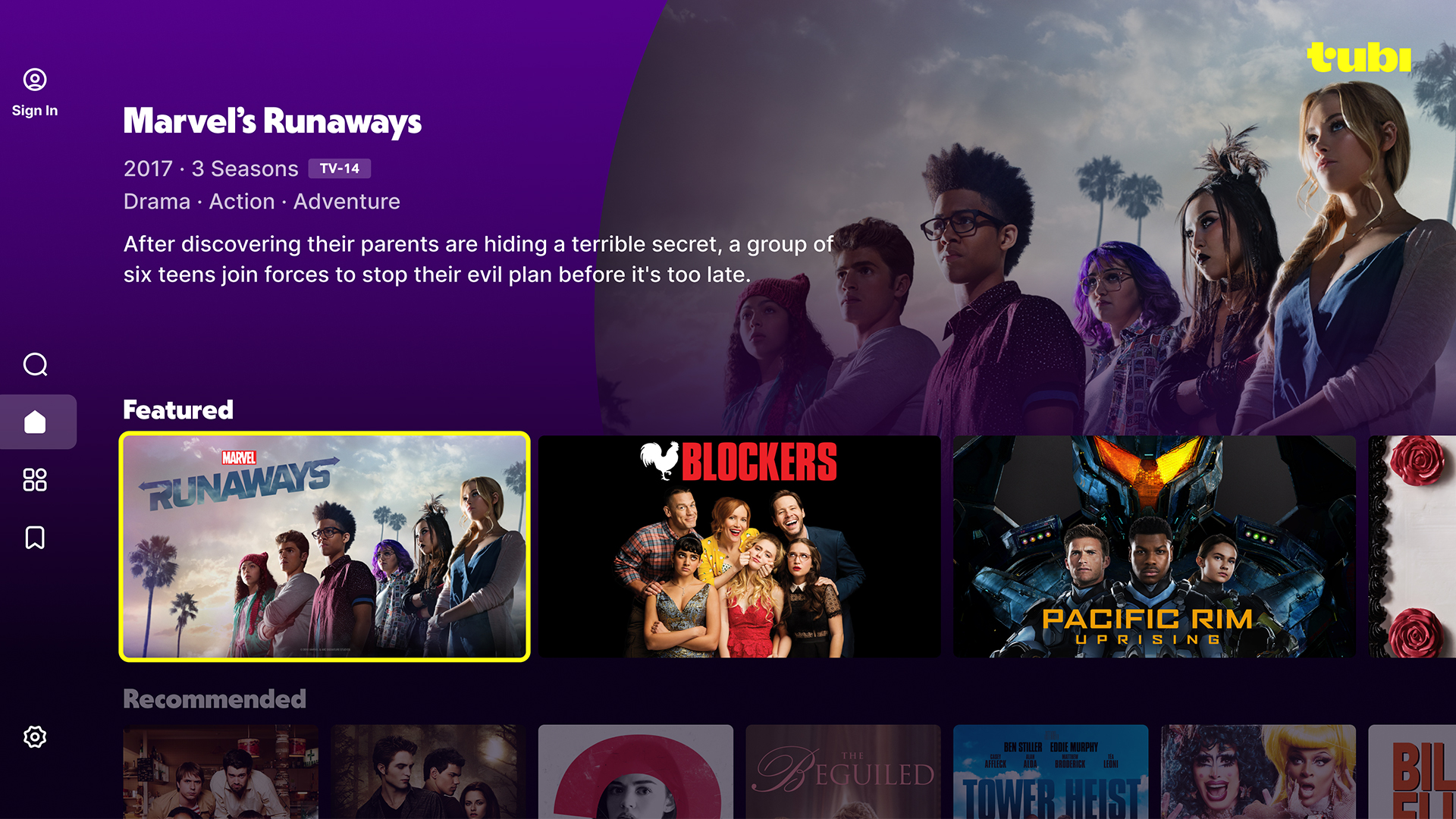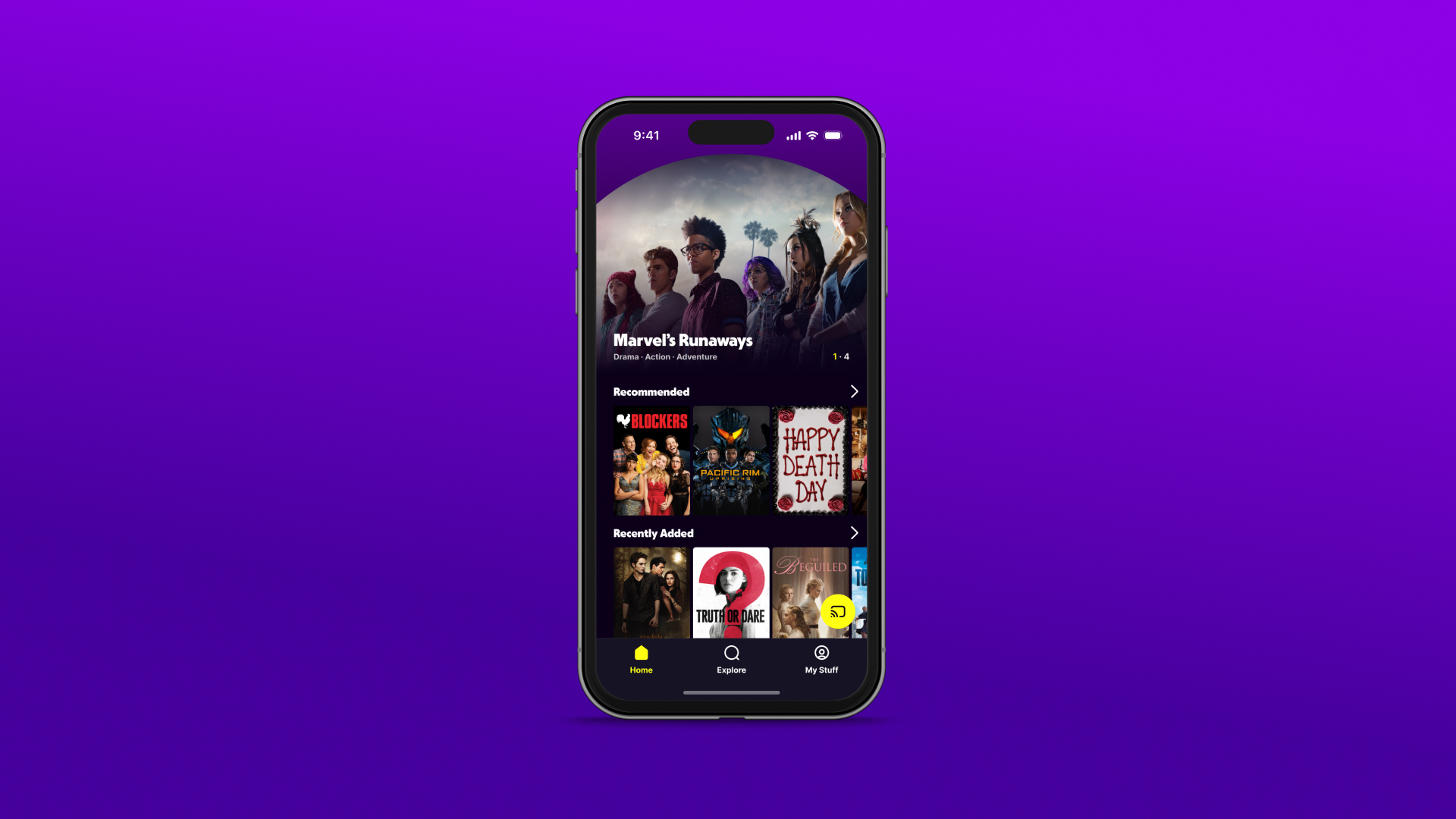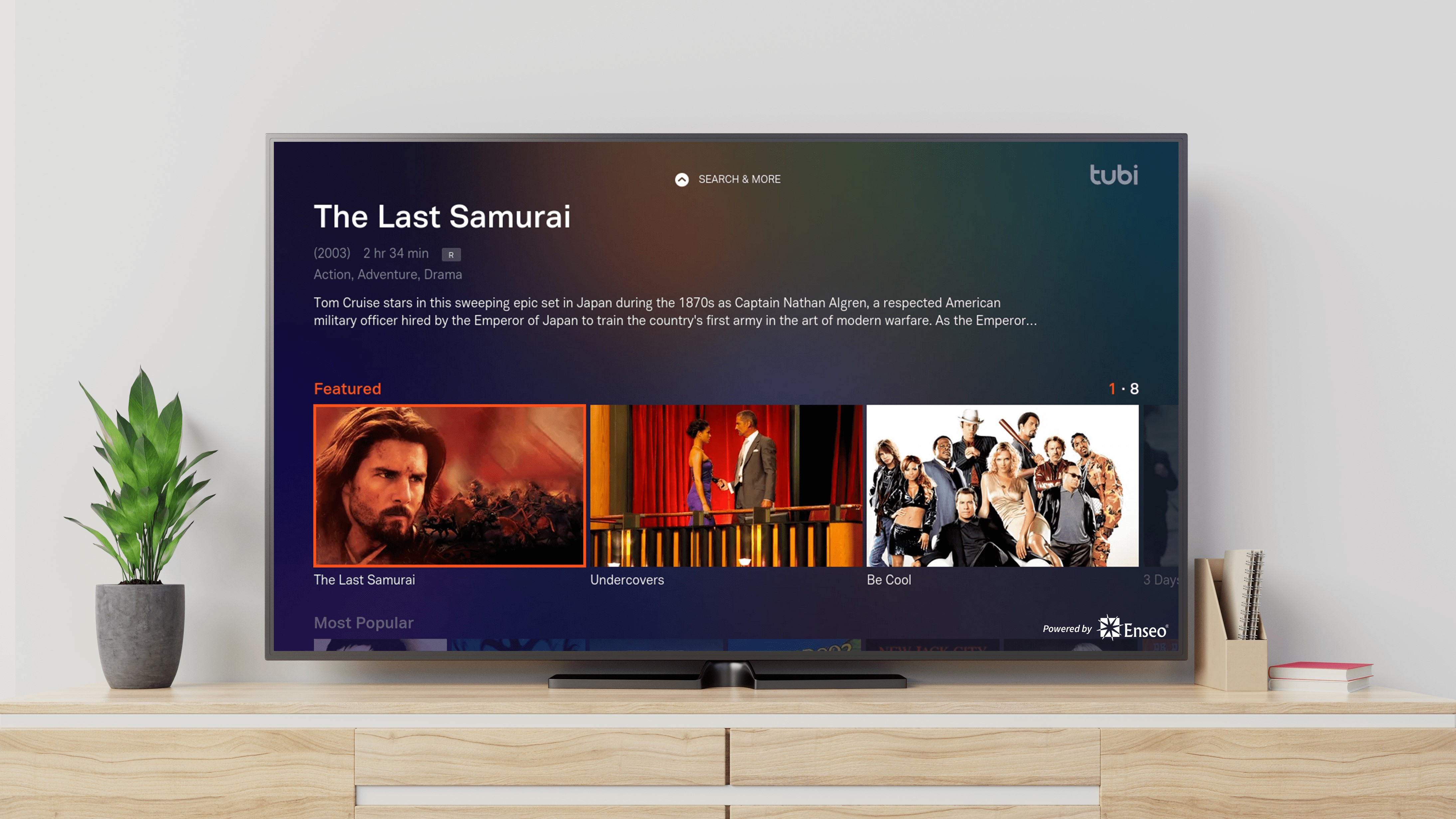‘Paradox of choice’: Tubi CEO explains how the free streaming service is making entertainment easy and fun again
Running in the FAST lane

When you think of free streaming, you might associate it with YouTube or homemade social media videos – not the likes of Netflix or Apple TV Plus, where you find big blockbuster movies and major series. But a growing number of services are offering the best of both worlds.
The best free streaming services are becoming viable alternatives to the leading subscription-based offerings, and while there’s still a long way to go before these services can replace the big names, there’s one service that has the backing of a major Hollywood studio that is quickly becoming a standout.
Tubi has one of the biggest catalogs of free-to-stream movies and shows, and it's caught the attention of a lot of people. The ads-based service has double the monthly active users of Netflix’s equivalent subscription tier that launched in late 2022, increasing to 80 million in 2024.
If those numbers sound surprising to you, then come down this rabbit hole (did you happen to catch Tubi's viral Super Bowl ad in 2023?) with me as I speak to Anjali Sud, who moved from Vimeo to become the CEO of Tubi in September 2023, to find out how the free streamer is managing to compete against the best streaming services.
‘Watch what you want’

Tubi is available in the US, Australia, Canada, Mexico, Latin America and, as of July, the UK, too. The streaming subscription alternative launched with 20,000 free movies and episodes in the UK (4,500 films alone), and while that’s a fraction of its reported 250,000-strong library in the US, Sud is confident that the service will scale quickly in the new market.
“We’re the most-watched free movie and TV streaming service in the US,“ Sud tells me during a phone conversation in July. “We’re the number one AVOD [advertising video on demand] in Canada. We’ve just tied with Disney Plus in the US on viewership [based on Nielsen data], so that means we're surpassing Peacock and Max – big streamers that have been in the market a long time.“
A big part of what makes Tubi so successful – aside from its biggest selling point, which is that it’s entirely free – is that it has such a robust library. Described as a ‘free Netflix rival’, you won’t just find small budget productions but a variety of movies and shows, including an increasing number of critically acclaimed films like these three movies with over 85% on Rotten Tomatoes.
Get daily insight, inspiration and deals in your inbox
Sign up for breaking news, reviews, opinion, top tech deals, and more.
Indeed, the size and diversity of content in Tubi’s catalog is something even I found surprising when I first started exploring the platform, and it’s what’s really resonating with audiences looking for a streaming alternative that won’t suddenly raise subscription prices – Paramount Plus raised prices in August, while Disney is planning price rises for October.

We're actually seeing even more momentum and adoption of Tubi because there’s a paradox of choice. There’s too much friction and fragmentation for audiences
Tubi CEO Anjali Sud
“What we hear from audiences is that we remove barriers, we make it easy, fun and free,” Sud points out. “We're on all the devices. We don't have a bunch of onboarding and friction to start watching content. We have a low ad load and [a catalog that gives you] the ability to go deep into areas that you might not initially think of as something you want to watch, or that other streamers aren't showing.”
When Sud mentions content that other streamers aren’t showing, she's referencing the fact that, unlike some other ad-supported services, Tubi also produces original content under its Originals banner (although from what I've seen the quality isn't going to give Netflix bosses sleepless nights), in addition to offering more independent and classic titles that the likes of Netflix or Disney might sooner ignore.
The licensing fees of those latter titles are quite low in comparison to more recent hits, making classic and independent cinema a secret weapon for the service, and given that two other alternative streaming services – Mubi, which specializes in independent and arthouse movies, and the Criterion Collection, which is one of the biggest distributor of classic cinema in the US – are huge successes in their own right, it’s a solid strategy.
For Sud, the biggest reason why Tubi is seeing so much growth comes down to subscription fatigue. “Even as the market has gotten more competitive in the US, we're actually seeing even more momentum and adoption of Tubi because there’s a paradox of choice,” she says. “There’s too much friction and fragmentation for audiences, so we've seen that translate into growth and viewership.”
A rising star

Tubi’s success didn’t happen overnight. It launched in the US in 2014, quietly securing funding before heavily investing in licensed content in 2019 (one of the biggest deals it made was with NBCUniversal to licence 400 movies and shows).
It was then bought by Fox (the portion that Disney didn’t acquire in 2019) a year later, which is when it really started to take off. Fox later bought MarVista – an established studio that had been distributing third-party content since 2003 – in 2021 to bolster Tubi’s library.
Tubi later landed a deal with Warner Bros. Discovery in 2023 for 11 new FAST channels – the equivalent of live TV and the same amount that Amazon Freevee got in June 2023 – which is around the same time that Sud took over the reins from its founder Farhad Massoudi.

Open Tubi today and you’ll see a bunch of great content, all of which you can watch without having to sign up and pay for an account – we’ve previously spotted three of our favorite thriller movies, three sci-fi spectaculars and five movies with 90% and higher on Rotten Tomatoes just to name a few, and you'll also find these five with over 89% on Rotten Tomatoes in the UK so it’s not just the US that gets good titles. But it wasn’t always like this.
Over the years, Tubi has perfected what Sud describes as its “listening model,” which, she explains, is “starting with a lot of content, learning how to personalize and show people what they're interested in, and then using that data and insights to get better and better, [allowing us to] expand our library with the right content to offer more and more of what people want to watch”.
Take the UK for instance; Sud says she’s been hearing the “same feelings of fatigue and the feeling that it's still just too hard to just start watching stuff and find everything you want in one place”. Of course, the UK has a lot of broadcasters with free streaming services – there’s even a service that amalgamates them all into one place called Freely (though that’s not widely available yet) – but these cater to mass audiences, whereas Tubi’s model is the opposite of that.
“We want to have a vast, diverse, massive breadth of content, but we also want to help individuals with their unique tastes and preferences,” Sud explains. “We feel like there is room – and actually a need – for that in the UK. That's why we're thrilled to be launching. It's a strong starting offering, but we will look to grow and invest and get stronger and stronger over time – the same way that we did in the US.”
Filling gaps in the market

Tubi’s increasing popularity comes at a time when many of the incumbent streaming services are spending less on content and adding more ads to help finance their operations. Indeed, while Apple TV Plus once felt like the new HBO, but its golden age could alreay be over as it starts to scale back its productions (it spent more than $20 billion to get just 0.2% of the US streaming audience, but then again we did get the likes of Severance – one of the best Apple TV Plus shows).
Following in the footsteps of Netflix, Amazon Prime Video and Disney, which brought its cheaper ad-based tier to the UK in November 2023, Apple TV Plus could be next to get an ad-based tier. And in another sign that streaming is turning into cable, Netflix is reportedly planning a completely free ad-supported service.
All this is further proof that Tubi’s ad-based free streaming model is working, and we can only expect it to get bigger. The platform’s audience is currently widespread, but Sud says there are three main pockets of interest where Tubi is seeing a lot of growth: “younger audiences, more multicultural audiences, and then what I would call passionate fandoms, so communities that cluster around specific things like ‘Wynona Earpers' (a community dedicated to Canadian Westerns) for instance.”

“Our overall view is that we put the viewer at the center,” Sud adds. “Whatever they are looking for, it's our job to bring it to them, whether that means we make it ourselves, we licence it, or we find a creative partnership that's on us to figure out, and we'll do anything we have to do to make that happen. Nothing's sacred there.”
Such an approach means that Tubi can also help find the next generation of creators by giving smaller filmmakers the chance get their work in front of a wider audience, while also providing a service that’s as refined as some of the paid-for offerings. Indeed, you can use OpenAI’s learning language model to help you find new movies and shows to watch on the platform’s mobile app in the US, bringing you the best features from a variety of streaming businesses.
“Tubi is trying to pair the premium content of Netflix, with the content discovery and long tail of YouTube,” Sud says. “We're trying to kind of bring both of those things together so that you get this long tail of content: you can find anything and everything, but we’re also showing you what you want to watch.”
You might also like

Amelia became the Senior Editor for Home Entertainment at TechRadar in the UK in April 2023. With a background of more than eight years in tech and finance publishing, she's now leading our coverage to bring you a fresh perspective on everything to do with TV and audio. When she's not tinkering with the latest gadgets and gizmos in the ever-evolving world of home entertainment, you’ll find her watching movies, taking pictures and travelling.